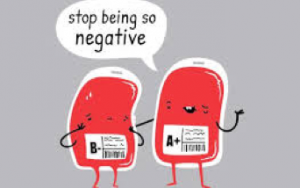Q: How often should I order a type and screen for my patients?
The Bottom Line: A single type and screen upon admission is sufficient for most patients who are at low risk of bleeding, are not pregnant and have not had a prior positive antibody screen.
Context: A type and screen (T&S) determines ABO blood group and Rh type and screens for clinically significant alloantibodies in case a patient needs blood. A type and cross determines the same information, but additionally performs a crossmatch between the patient’s sample and a unit of blood to prepare a product for immediate transfusion. A type and cross should only be ordered if there is a high likelihood of transfusion.
A T&S is “active” for three calendar days. The collection day is considered day 0. For example, a specimen drawn on a Tuesday is good until midnight on Friday, regardless of the time of day it was drawn.
Ideally, patient blood samples are collected in advance of intended transfusions to allow for a T&S. Unfortunately, there is little published data regarding how often a T&S should be performed. There are, however, standards set by the American Association of Blood Banks (AABB).¹‚² These standards are based on the timing of red cell alloantibody formation and their detection after a stimulating event (i.e. transfusion, pregnancy, etc.). The vast majority of delayed hemolytic transfusion reactions due to anamnestic antibody production manifest at 3-14 days after transfusion,³ and it is based on this information that the AABB requires a sample drawn within three days of transfusion.
For pre-operative patients at JHH who have not been transfused or have been pregnant within the preceding three months and who do not have an ABO discrepancy, positive antibody screen or previously identified antibodies, a specimen may be collected up to 30 days prior to the patient’s surgery. After transfusion, the specimen expiration date changes to three days post transfusion and the 30-day rule is no longer in effect. For example, if the collection date is November 1st, the original expiration date of a 30-day specimen is December 1st. If the patient is transfused on November 15, the T&S will receive a new expiration date of November 18th.² There are no standard guidelines for medicine patients.
The Data: At our institution in the Department of Medicine (excluding MICU), 1469 T&S were sent in June 2015 on a total of 704 patients. Of those 704 patients, only 76 (11%) received blood transfusions for a total of 118 units of packed red blood cells given that month. Put another way, 89% of the T&S sent were never needed. Most of the patients who received blood products were transfused due to bleeding, hemoglobinopathy or symptomatic anemia. Additionally, almost half had a CBC prior to transfusion, providing another opportunity to order a T&S if it had expired.
Conclusion: For patients who are at low risk of bleeding, are not pregnant and have not had a prior positive antibody screen, a single T&S is sufficient for their entire hospital admission. In June 2015, this practice would have resulted in collecting almost 584 fewer T&Ss, saving approximately 3.5 liters of patients’ blood (6 ml of blood per T&S). Should a patient need additional blood products routinely or urgently during his or her hospital stay after the three-day sample has expired, a stat or routine T&S may be ordered at that time and testing will be completed by the lab within several hours of receipt of the specimen if the antibody screen is negative. Patients with a high risk of bleeding (active bleeding, severe hemoglobinopathies, symptomatic anemia, pregnancy, recent transfusion or prior antibodies) should continue to have a T&S tested every three calendar days.
- Levitt J, ed. Standards for blood banks and transfusion services. 29th ed. Bethesda, MD: AABB, 2014.
- Marshall C, Boyd J, Ness P. Pathology Transfusion Medicine Testing Procedures: T&S Policy. https://hpo.johnshopkins.edu/pathology/?event=manual&manualid=109. Retrieved 12/11/2015.
- Milkins C, Berryman J, Cantwell C et al. Guidelines for pre-transfusion compatibility procedures in blood transfusion laboratories. British Committee for Standards in Haematology. 2014. PMID: 23216974
-Written by Jennifer Bynum, MD, and Kevin Eaton, MD, for the Department of Medicine High Value Care Committee.
